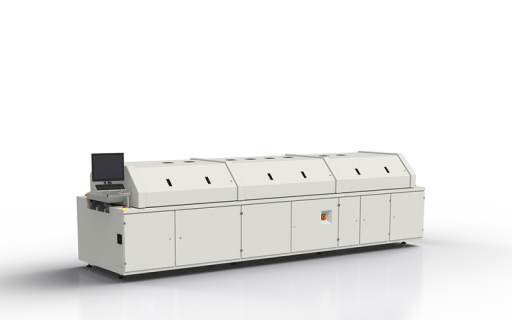The main function of reflow soldering
Release time:2024-02-04Publisher:Jeenoce
Reflow soldering is mainly used in SMT process technology. In the SMT process, the main function of reflow soldering is to place the PCB board with attached components into the track of the reflow soldering machine. Through heating, insulation, welding, cooling and other processes, the solder paste is transformed from a paste to a liquid through high temperature, and then cooled to a solid state, thereby achieving the function of soldering SMT electronic components and PCB boards.
Reflow soldering machine, also known as reflow soldering machine or reflow soldering, refers to the same equipment. The function of reflow soldering is to solder the PCB board and components, with high production efficiency, fewer welding defects, and stable performance. It is an important welding equipment in the PCBA processing plant.
Reflow soldering mainly consists of four temperature zones: heating zone, constant temperature zone, welding zone, and cooling zone. This also reflects the change process of solder paste on the circuit board with installed components in the reflow soldering machine. Below, JEENOCE will briefly explain the functions of the four temperature zones in a reflow soldering machine.

1、 The role of reflow soldering heating zone
The heating zone is in the first stage of reflow soldering, where the PCB board is preheated and heated, the solder paste is activated, some solvents are evaporated, and the moisture of the PCB board and components is evaporated clean to eliminate stress inside the PCB board.
2、 The role of reflow soldering insulation zone
The PCB board enters the insulation area and reaches a certain temperature to prevent sudden entry into the welding high temperature area and damage to the PCB board and components. The function of this temperature zone is also to keep the temperature of the components stable, keeping the temperature of different sizes of components on the PCB board constant, reducing the temperature difference of the entire PCB board, and evaporating the flux in the solder paste to remove oxides from the solder pads and component pins.
3、 The role of reflow soldering zone
The PCB board enters the welding area and reaches the highest temperature. At this point, the solder paste has changed from a paste to a liquid state, fully wetting the solder pads and component pins. The duration of this process is relatively short to prevent high temperature damage to the PCB board and components.
4、 The role of reflow soldering cooling zone
After the solder paste turns into liquid, it can be cooled down. The faster the cooling speed, the better. If the cooling speed is too slow, it is easy to produce dull roughness. Generally, it solidifies when cooled to 75 ℃, and then the PCB board can be soldered.
In fact, the main function of reflow soldering is to solidify the solder paste and solder SMT components and circuit boards together through different temperature changes inside the reflow soldering machine. Another function is also to serve as a curing agent, allowing SMT components to be cured and pasted together with the circuit board through red glue, facilitating post peak soldering.

